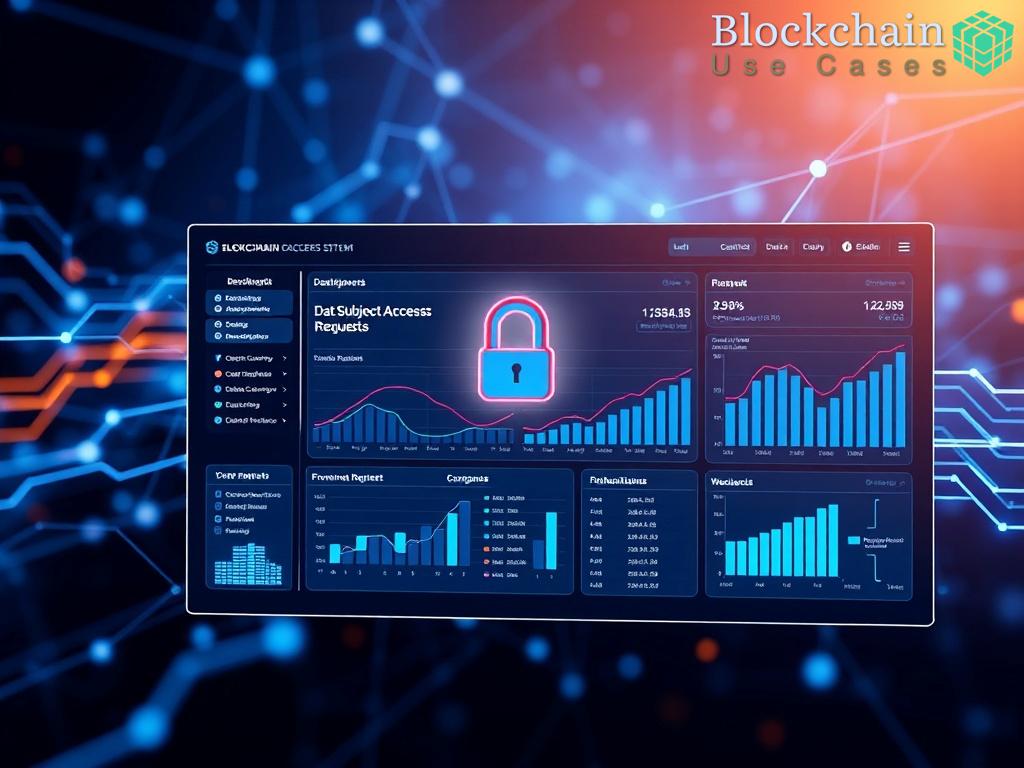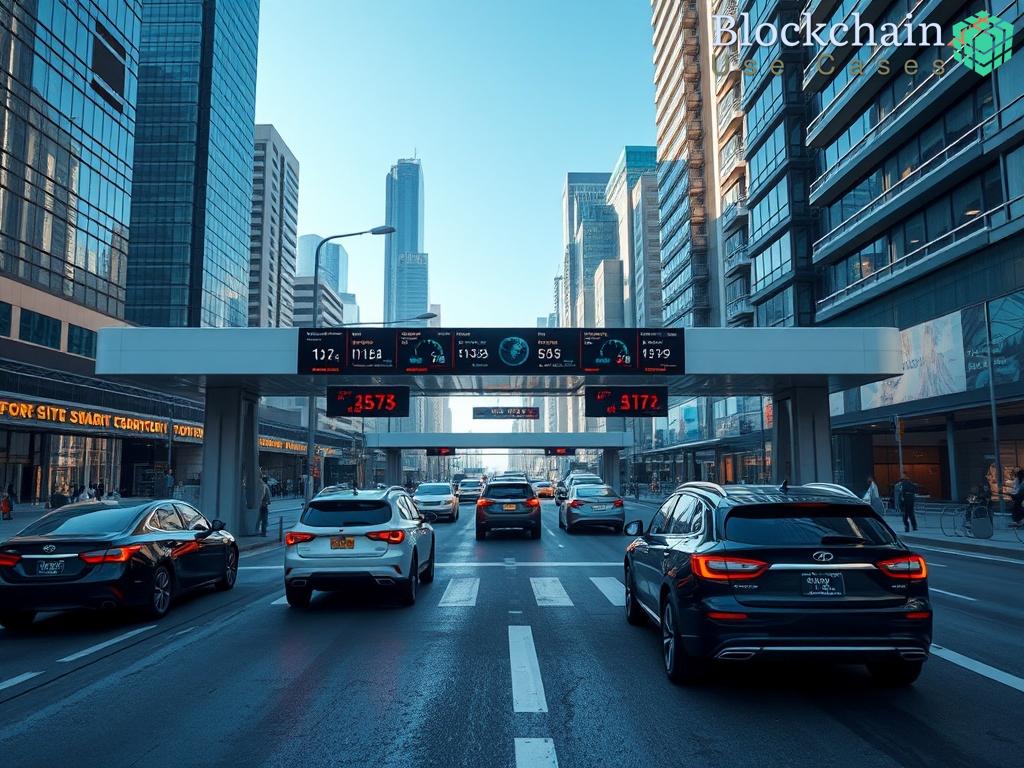Integration of Smart Contracts in IoT Systems
The integration of smart contracts within IoT systems is reshaping the landscape of toll collection and congestion pricing. By leveraging the capabilities of IoT devices, municipalities can automate processes, ensuring that tolls are collected seamlessly and transparently. Smart contracts facilitate real-time transactions, allowing for dynamic pricing based on traffic conditions. This innovation not only enhances efficiency but also drives consumer trust through automated, tamper-proof processes.
Smart contracts serve as self-executing contracts with the terms of the agreement directly written into code. This technology, when combined with IoT systems, creates a powerful framework for various applications, including toll collection. Here are several ways that smart contracts enhance IoT functionality:
- Automation: Smart contracts automate the execution of transactions, minimizing the need for human intervention.
- Transparency: All parties involved can access the same information, reducing disputes and enhancing trust.
- Security: Smart contracts operate on blockchain technology, providing a secure and tamper-proof environment.
- Real-time Data Processing: IoT devices can gather data in real time, allowing for immediate adjustments to pricing based on current conditions.
To illustrate the benefits of integrating smart contracts with IoT systems, consider the following comparative analysis between traditional toll collection methods and smart contract-enabled systems:
| Feature | Traditional Toll Collection | Smart Contract-Enabled System |
|---|---|---|
| Transaction Speed | Moderate, often requires manual processing | Instantaneous, automated execution |
| Dispute Resolution | Complex, often requires mediation | Transparent, built-in mechanisms for resolution |
| Scalability | Limited by physical infrastructure | Highly scalable, adaptable to varying traffic conditions |
| Cost Efficiency | Higher operational costs due to manual processes | Lower costs through automation and reduced fraud |
Dynamic Toll Collection Mechanisms
The landscape of toll collection is undergoing a remarkable transformation due to the integration of smart contracts and IoT technologies. This fusion not only facilitates seamless transactions but also enables the implementation of dynamic toll collection mechanisms that adapt in real time to traffic conditions and user behavior. As cities grapple with congestion and its associated costs, the deployment of these advanced systems offers a promising solution to managing road usage more effectively.
At the heart of dynamic toll collection mechanisms is the ability to adjust pricing based on various factors such as time of day, traffic density, and even driver behavior. Smart contracts automate this pricing adjustment by analyzing data collected from IoT devices embedded in vehicles and road infrastructure. For instance, during peak hours, the system can increase toll prices to discourage excessive use of certain routes, thereby alleviating congestion. Conversely, during off-peak hours, the tolls may be reduced to promote road usage and enhance overall traffic flow.
Adaptive pricing models represent a significant leap forward in how toll systems operate. By leveraging real-time data from connected vehicles and sensors, these models can implement differential pricing strategies that respond to immediate conditions. This data-driven approach not only optimizes revenue collection but also serves as an incentive for drivers to alter their travel patterns. For example, when a driver approaches a congested area, the system can alert them to higher rates and suggest alternative routes, thus promoting a smoother traffic experience across the city.
Moreover, the integration of smart contracts ensures that these pricing adjustments are executed instantly and transparently. The terms of each adjustment are coded into the contract, eliminating ambiguity and providing all stakeholders with a clear understanding of the pricing structure. This level of transparency fosters trust among users, as they can be confident that the pricing they experience is fair and justified by current conditions.
While the financial benefits of dynamic toll collection mechanisms are significant, the advantages extend beyond mere revenue generation. The environmental impact of reduced congestion can lead to lower emissions and improved air quality, contributing to a more sustainable urban environment. Additionally, the data collected through IoT devices can be leveraged for urban planning and infrastructure development, allowing municipalities to make informed decisions that enhance the overall transportation ecosystem.
As cities continue to innovate and embrace smart technologies, the potential for dynamic toll collection systems to alleviate congestion and enhance user experience is immense. With smart contracts serving as the backbone of these systems, municipalities are well-equipped to navigate the challenges of modern urban mobility. Ultimately, the integration of IoT and smart contracts in toll collection represents a forward-thinking approach to managing urban traffic, paving the way for smarter, more efficient cities.
Impact of Congestion Pricing on Traffic Management
The implementation of congestion pricing has emerged as a pivotal strategy in urban traffic management, particularly as cities face increasing challenges related to traffic congestion and environmental sustainability. By leveraging smart contracts in IoT-enabled systems, municipalities can not only optimize toll collection but also enhance traffic flow, reduce congestion, and promote more sustainable transport habits. This innovative approach allows for a flexible, data-driven pricing model that directly responds to current traffic conditions, making it a game-changer in urban mobility.
One of the most significant impacts of congestion pricing is its ability to alter driver behavior during peak hours. By implementing differential pricing strategies that increase tolls during high-traffic times, cities can effectively discourage unnecessary vehicle usage on congested routes. This shift not only eases the burden on the infrastructure but also encourages drivers to consider alternative travel times or routes. As a result, the overall demand on heavily trafficked areas diminishes, leading to smoother traffic flow and reduced travel times for all motorists. The integration of IoT technology ensures that these adjustments are made in real-time, allowing for an agile response to changing conditions.
Moreover, congestion pricing plays a crucial role in promoting sustainable travel choices among commuters. As tolls fluctuate based on congestion levels, drivers are incentivized to seek out public transportation options, carpooling, or even biking, particularly when faced with higher fees for single-occupancy vehicle use. This behavioral shift not only alleviates traffic congestion but also contributes to a substantial decrease in vehicular emissions, thus enhancing urban air quality. Furthermore, the data collected through IoT devices can inform urban planning decisions, enabling city officials to identify high-demand public transit routes and develop infrastructure that supports greener transportation alternatives.
Security and Privacy Challenges in Smart Contract Implementation
The integration of smart contracts within IoT-enabled dynamic toll collection and congestion pricing systems has been celebrated for its potential to enhance efficiency and transparency. However, this leap into technological innovation is not without its hurdles. Security and privacy challenges loom large, necessitating a comprehensive understanding of the risks associated with their implementation.
One of the foremost concerns is data security. As IoT devices collect vast amounts of personal and vehicular information, they become attractive targets for cybercriminals. These devices are often deployed in public spaces, where their physical security can be compromised. If a malicious entity were to gain access to these systems, they could manipulate toll prices or divert funds, undermining the entire operational framework. Consequently, employing robust encryption methods and regular security audits is essential to safeguard sensitive data and maintain the integrity of smart contracts.
Equally important is the issue of privacy protection. With smart contracts processing real-time data related to vehicle movements and user behavior, there is a pressing need to ensure that this information is not misused. Striking a balance between utilizing data for effective traffic management and preserving individual privacy rights presents a significant challenge. To address this concern, municipalities must implement stringent data governance policies that dictate how information is collected, stored, and shared. This includes anonymizing data to protect the identities of users while still allowing for effective analysis and decision-making.
To counteract the aforementioned security and privacy challenges, adopting advanced security protocols is imperative. This involves utilizing multi-signature wallets that require multiple approvals before transactions are executed, thereby reducing the risk of unauthorized access. Moreover, incorporating blockchain technology can enhance the security of smart contracts by providing a decentralized ledger that is inherently resistant to tampering. By ensuring that all transactions are recorded transparently and immutably, municipalities can build trust with users and demonstrate accountability.
Establishing a trust framework is essential for fostering user confidence in smart contract-enabled toll collection systems. Transparency about how data is used and the measures taken to protect it can significantly influence public perception. Regularly updating users on security protocols and ensuring they have control over their personal information can mitigate concerns about privacy invasion. Furthermore, engaging with stakeholders and gathering feedback can lead to the development of a more user-centric approach, ultimately enhancing the user experience while maintaining robust security standards.
Case Studies: Successful Applications of Smart Contracts in Tolling
The application of smart contracts in tolling systems is not just a theoretical concept; it has been successfully implemented in various cities around the world, showcasing the transformative potential of this technology. These case studies illustrate how municipalities can leverage smart contracts alongside IoT capabilities to create efficient, user-friendly tolling solutions. By examining real-world implementations, we can glean insights into the operational benefits and challenges faced by these pioneering initiatives.
In San Francisco, the Bay Area Express Lanes project serves as a leading example of smart contracts in action. This dynamic tolling system utilizes advanced IoT sensors and smart contracts to manage traffic flow on express lanes. The toll rates are adjusted in real-time based on traffic density, ensuring optimal usage of the express lanes. This initiative not only enhances traffic management but also generates additional revenue for public transport improvements.
The integration of smart contracts facilitates automated billing and payment processing, significantly reducing operational costs and eliminating the need for manual toll collection. Moreover, the system provides transparency, as drivers can see real-time toll rates on digital displays, helping them make informed decisions about their travel routes. The successful implementation of this project has led to reduced congestion and improved travel times, making it a model for other cities to follow.
Stockholm’s congestion tax system is another noteworthy application of smart contracts in tolling. Launched in 2007, the system employs a combination of cameras and IoT technology to monitor vehicle movements entering and exiting the city center. The smart contracts automatically calculate the congestion fees based on the time of day and the type of vehicle, ensuring a fair pricing model that discourages unnecessary trips during peak hours.
This innovative approach has resulted in a significant decrease in traffic congestion, with reports indicating a reduction of up to 20% in vehicle entries into the city during peak times. Additionally, the revenue generated from the congestion tax has been reinvested into public transportation infrastructure, further promoting sustainable urban mobility. The success of Stockholm’s system demonstrates the effectiveness of smart contracts in enhancing urban traffic management while fostering a culture of responsible travel.


















